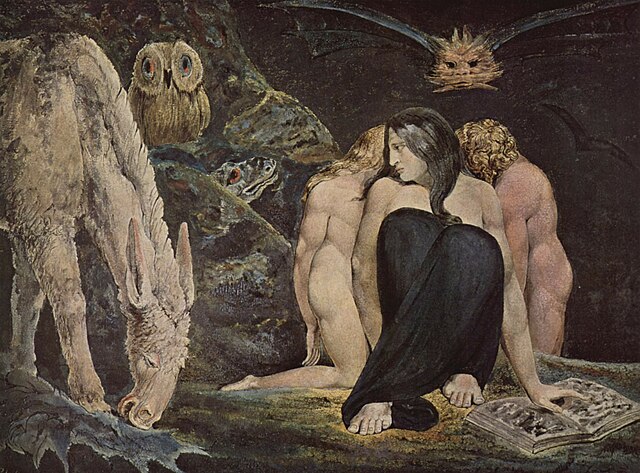Enitharmon is a major female character in William Blake's mythology, playing a main part in some of his prophetic books. She is, but not directly, an aspect of the male Urthona, one of the Four Zoas. She is in fact the Emanation of Los, also male. There is a complex verbal nexus attached. The Zoa Tharmas has emanation Enion, and Eni-tharm(as)-on is one derivation of her name. That should perhaps be read in the inverse direction though, as a construction of the Tharmas/Enion pair's names. Within Blake's myth, she represents female domination and sexual restraints that limit the artistic imagination. She, with Los, gives birth to various children, including Orc.
The Night of Enitharmon's Joy, 1795 William Blake
Vala, or The Four Zoas is one of the uncompleted prophetic books by the English poet William Blake, begun in 1797. The eponymous main characters of the book are the Four Zoas, who were created by the fall of Albion in Blake's mythology. It consists of nine books, referred to as "nights". These outline the interactions of the Zoas, their fallen forms and their Emanations. Blake intended the book to be a summation of his mythic universe but, dissatisfied, he abandoned the effort in 1807, leaving the poem in a rough draft and its engraving unfinished. The text of the poem was first published, with only a small portion of the accompanying illustrations, in 1893, by the Irish poet W. B. Yeats and his collaborator, the English writer and poet Edwin John Ellis, in their three-volume book The Works of William Blake.
An illustration of the relationship of the four Zoas from one of Blake's other works: Milton a Poem
William Blake: The Four Zoas, manuscript, page 3
The Night of Enitharmon's Joy, 1795 William Blake



